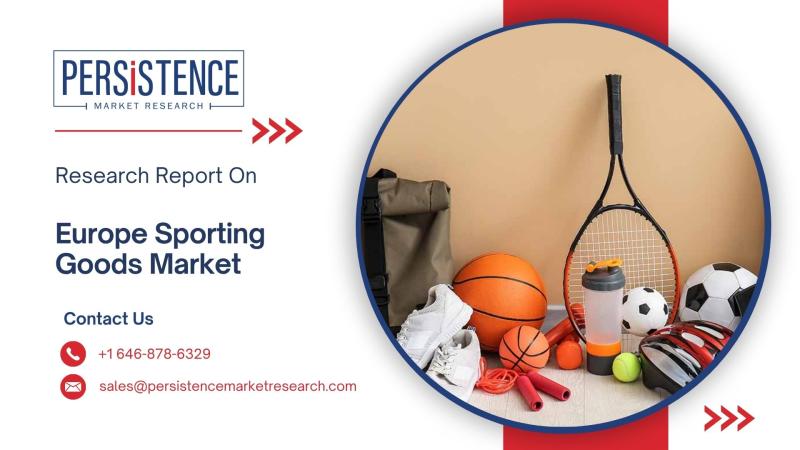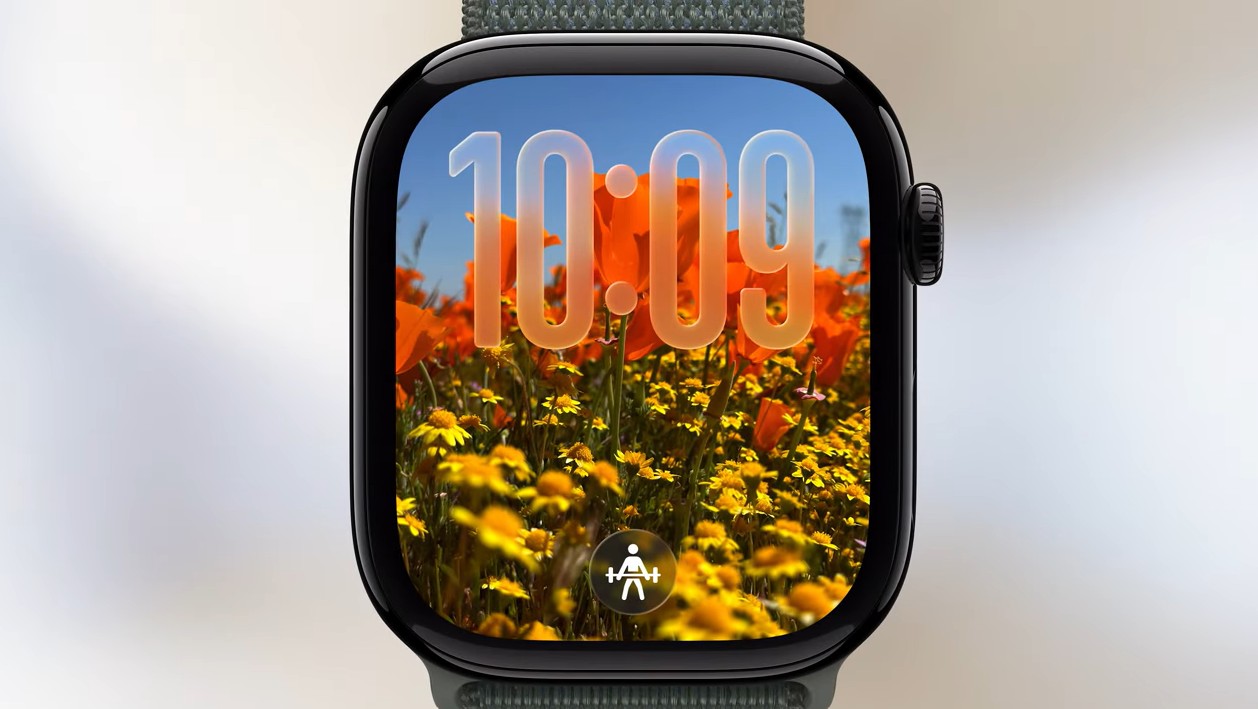
Europe Sporting Goods Market
The Europe sporting goods market is experiencing rapid expansion, driven by a growing awareness of health and fitness, increased participation in sports, and rising disposable incomes. The market is projected to increase from US$ 226.5 billion in 2025 to US$ 391.7 billion by 2032, growing at a CAGR of 8.1% during the forecast period from 2025 to 2032. As the demand for sports equipment and apparel continues to rise, the region is witnessing a surge in product innovations, the entry of new players, and the expansion of distribution channels to cater to a more diverse consumer base. This article delves into the various factors influencing the market’s growth, including segmentation, regional insights, and future opportunities.
✅ Overview of the Market, Market Statistics, Key Growth Drivers, and Leading Segment
The European sporting goods market encompasses a wide range of products, including sports apparel, sports footwear, exercise equipment, outdoor sporting goods, and team sports equipment. It is influenced by several factors, such as the increasing interest in fitness and wellness, the growing popularity of outdoor activities, and technological advancements in product design. With the market size projected to reach US$ 391.7 billion by 2032, Europe is poised to see robust growth in both product offerings and consumer demand. The 8.1% CAGR reflects an increasing preference for quality sports goods and a rising emphasis on physical activity across different age groups.
Get a Sample Copy of Research Report (Use Corporate Mail id for Quick Response): https://www.persistencemarketresearch.com/samples/12034
The demand for sporting goods in Europe is being fueled by several key growth drivers. The health and wellness trend is gaining momentum, with more consumers adopting active lifestyles, which in turn is driving the need for exercise equipment, fitness apparel, and sports accessories. Additionally, the increasing participation in recreational and professional sports further enhances the demand for high-quality sports equipment and apparel. With online retail becoming more prevalent, accessibility to sporting goods has improved, allowing customers from all regions to make purchases with ease. Furthermore, technological innovation in sports products, such as smart wearables, performance-enhancing gear, and eco-friendly materials, is contributing to market growth.
✅ Key Highlights from the Report:
➤ The European sporting goods market is expected to reach US$ 391.7 billion by 2032 from US$ 226.5 billion in 2025.
➤ The market is projected to register a CAGR of 8.1% during the forecast period from 2025 to 2032.
➤ Sports apparel and footwear account for the largest market share within the sector.
➤ Increasing awareness of fitness and wellness is a primary driver of market growth.
➤ The rise in online retail is making sporting goods more accessible to a broader audience.
➤ Smart sports gear and sustainable products are gaining traction among consumers.
📊 Market Segmentation
The European sporting goods market is segmented into various categories based on product type, end-user, and distribution channels. The growth and trends in these segments are critical to understanding the overall market dynamics.
Product Type: The market is divided into several key product categories, including sports apparel, footwear, exercise equipment, outdoor gear, and team sports equipment. Among these, sports apparel and footwear are the largest segments, driven by growing participation in fitness activities and sports leagues. Outdoor sporting goods and exercise equipment have also seen significant growth due to rising outdoor activities and home fitness trends. The increasing popularity of smartwear-clothing embedded with sensors to track fitness metrics-is further expanding the sports apparel segment.
End-User: The sporting goods market caters to various end-users, including individuals, sports teams, and fitness centers. The individual consumer segment is the largest, as people invest in personal fitness and leisure activities. The commercial sector, including gyms, sports clubs, and recreational centers, is also witnessing steady growth due to the increasing popularity of fitness regimes and team sports. Additionally, the demand from professional sports teams for high-end, performance-oriented equipment is fueling the market for premium sporting goods.
📊 Regional Insights
The European sporting goods market has diverse regional trends that contribute to the overall growth of the industry. Understanding these regional dynamics helps in recognizing the key drivers of growth and identifying opportunities for investment and expansion.
Western Europe: Germany, France, and the United Kingdom dominate the sporting goods market in Western Europe. The increasing participation in professional and recreational sports, coupled with high disposable incomes, drives demand for premium sports goods in these regions. Furthermore, the trend toward sustainable products is gaining traction in these countries, with brands focusing on eco-friendly materials and technologies in product development.
Eastern and Southern Europe: In countries like Italy, Spain, and Poland, there is a growing interest in outdoor sports such as cycling, hiking, and running, which is contributing to the demand for outdoor sporting goods. The increase in health consciousness and active lifestyles in these regions has created opportunities for sports brands to offer a wide range of products tailored to individual needs. Additionally, the rise of online retail is boosting access to sports goods across these regions, facilitating the growth of the overall market.
✅ Market Drivers
Growing Health and Fitness Awareness: As consumers become more aware of the importance of maintaining an active lifestyle, demand for sports goods has surged. People are increasingly participating in fitness activities, gym workouts, and recreational sports, which creates a higher demand for exercise equipment, athletic apparel, and footwear.
Technological Innovation: Technological advancements in sports equipment and apparel are contributing significantly to market growth. The introduction of smart sports gear, such as wearables that track performance metrics (heart rate, calories burned, etc.), has attracted fitness enthusiasts. These innovations not only improve the consumer experience but also offer better performance, creating a demand for high-tech sporting goods.
Expansion of Online Retail: The rise of e-commerce platforms is a crucial driver for the European sporting goods market. Consumers can now access a wider variety of products and brands online, with the added convenience of doorstep delivery. The ease of online shopping is expanding the reach of sporting goods brands beyond physical store locations, particularly in smaller cities and rural areas.
✅ Market Restraints
Economic Uncertainty: Economic downturns and political instability in certain European countries could hinder consumer spending on non-essential items, including sporting goods. A reduction in disposable income and changes in consumer behavior could pose challenges to market growth, especially for premium and high-end products.
Intense Competition and Price Sensitivity: The sporting goods market in Europe is highly competitive, with a large number of local and international brands vying for market share. While consumers have access to a wide range of products, price sensitivity remains an issue. Many customers look for affordable alternatives, particularly during economic downturns, which can reduce the profitability of brands offering premium products.
Supply Chain Disruptions: The sporting goods industry is reliant on global supply chains, and disruptions-whether due to geopolitical tensions, pandemics, or trade barriers-could affect the timely production and delivery of goods. These disruptions can lead to product shortages, delays in launching new products, and higher operational costs.
✅ Market Opportunities
Sustainable Products: As consumers grow more environmentally conscious, the demand for sustainable sports goods is on the rise. Companies that focus on eco-friendly materials, recyclable packaging, and energy-efficient manufacturing processes will have a significant advantage in the market.
Rise in Adventure and Outdoor Sports: The increasing popularity of outdoor and adventure sports such as mountain biking, skiing, and kayaking presents a lucrative opportunity for brands specializing in outdoor gear and apparel. The shift towards outdoor fitness is particularly strong in regions with access to nature, such as the Alps or Scandinavia, providing brands with opportunities for innovation and targeted product development.
Expansion in Emerging Markets: Eastern European countries and emerging economies within the European Union represent an untapped opportunity for market growth. As the middle class continues to expand in these regions, disposable incomes rise, and the demand for sporting goods increases. Companies looking to expand their footprint can benefit from targeting these fast-growing markets.
Request for Customization of the Research Report: https://www.persistencemarketresearch.com/request-customization/12034
👉 Reasons to Buy the Report:
✔️ Comprehensive Market Forecast: Gain valuable insights into market trends, projections, and growth patterns over the next decade.
✔️ Understanding Consumer Behavior: Learn about evolving consumer preferences and how they impact product development in the sporting goods industry.
✔️ Competitive Landscape: Analyze the key players in the market and their strategies for gaining market share.
✔️ Market Segmentation: Detailed breakdown of market segments by product type, end-user, and geography to guide your business strategy.
✔️ Investment Insights: Identify key regions and market segments that present lucrative opportunities for expansion and investment.
📌 Key Players
✦ Nike, Inc.
✦ Adidas AG
✦ Decathlon S.A.
✦ Under Armour, Inc.
✦ Puma SE
Recent Developments:
■ Nike recently launched a new range of sustainable sports shoes, manufactured using recycled materials.
■ Decathlon expanded its retail network in Eastern Europe to tap into emerging markets and meet the growing demand for sports goods.
The Europe sporting goods market is on a strong growth trajectory, fueled by changing consumer behaviors, increased health awareness, and a greater focus on sustainability. With emerging opportunities in both established and growing markets, industry players have the chance to capitalize on evolving trends and meet the diverse needs of consumers across the continent.
☎️ Contact Us:
Persistence Market Research
G04 Golden Mile House, Clayponds Lane
Brentford, London, TW8 0GU UK
USA Phone: +1 646-878-6329
UK Phone: +44 203-837-5656
Email: sales@persistencemarketresearch.com
Web: https://www.persistencemarketresearch.com
About Persistence Market Research:
At Persistence Market Research, we specialize in creating research studies that serve as strategic tools for driving business growth. Established as a proprietary firm in 2012, we have evolved into a registered company in England and Wales in 2023 under the name Persistence Research & Consultancy Services Ltd. With a solid foundation, we have completed over 3600 custom and syndicate market research projects, and delivered more than 2700 projects for other leading market research companies’ clients.
Our approach combines traditional market research methods with modern tools to offer comprehensive research solutions. With a decade of experience, we pride ourselves on deriving actionable insights from data to help businesses stay ahead of the competition. Our client base spans multinational corporations, leading consulting firms, investment funds, and government departments. A significant portion of our sales comes from repeat clients, a testament to the value and trust we’ve built over the years.
This release was published on openPR.






























































